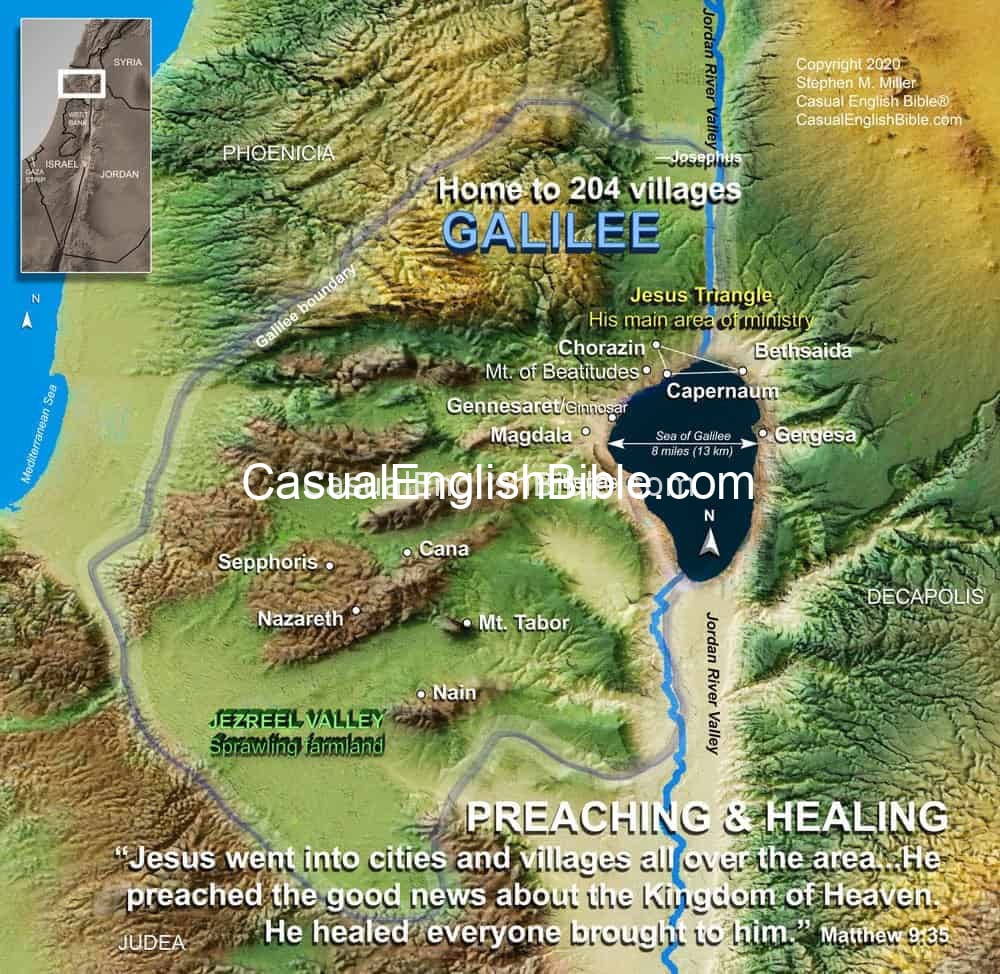
Map Galilee farmland
Mapping Galilee farmland
When Jesus traveled around Galilee teaching and healing people, he was moving among farmers and fishermen.
In his day, the Galilean region was a renowned agricultural hub. Crops such as wheat, barley, olives, and grapes thrived in the rich soil. Farmers skilled in irrigation farming built terraces on slopes to curb soil erosion. Some irrigated their farms with spring water, even if they had to haul it by hand.
Ancient historian’s view of Galilee farming
Josephus, a first-century Jewish historian, wrote extensively about the Galilean region during his time. In his work, "The Jewish War," he described the Galilean region as fertile and productive, well suited for agriculture due to its topography and climate.
Josephus also highlighted the skilled farmers' techniques in Galilee. He described the daily life of Galilean farmers, highlighting their hard work and dedication. Josephus said they start their work early in the morning and continue until sunset, working to ensure their crops thrived.
He said the Galilean region was a beautiful and productive area for agriculture.
Farming Galilee today
Galilee, now a part of modern-day Israel, remains a vital agricultural hub, primarily for fruits and vegetables that are grown and exported around the world. many farmers here have harnessed advancements in technology to transform the agricultural sector with computerized irrigation systems, greenhouses, and modern tools such as tractors and harvesting machines that have improved farming efficiency and yields.
Green farming
Despite the significant strides in technology, the essence of using natural inputs in farming remains vital in Galilee today, just as it was in biblical times. The producers use integrated pest management techniques to ensure that their crops thrive while protecting the environment. Organic farming methods are also prevalent among small-scale farmers who sell their produce in local farmer markets.
Written by AI Chat
Edited by Miller
Spiritual harvest
35Jesus went into cities and villages all over the area. He taught in synagogues. He preached the good news about the Kingdom of Heaven. He healed everyone brought to him. It didn’t matter what kind of illness or disease they had. 36He felt for the people. He could see they were facing a lot of troubles and they had no idea where to turn for help. They were like lost sheep without a shepherd. 37He told his disciples, “There’s a huge crop out there ready to harvest. But we don’t have enough workers. 38Ask the Boss in charge of the harvest to send more workers out into the field.”
For more about life in Jesus's day, from Stephen M. Miller:

